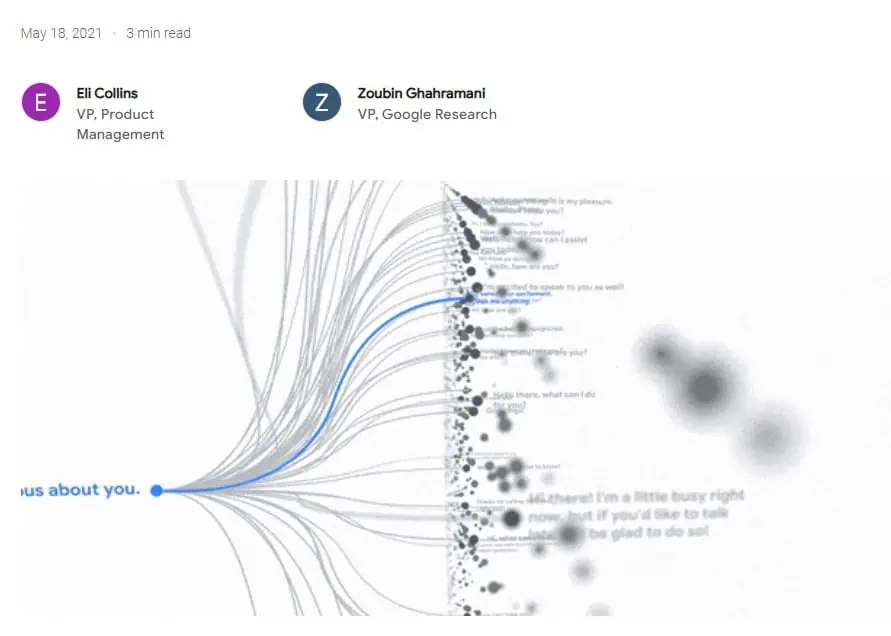The Rise of Google LAMDA: What You Need to Know About This AI Breakthrough
As the world of artificial intelligence (AI) continues to advance at a rapid pace, new breakthroughs are constantly being made.
One of the most recent and significant developments in AI has been Google LAMDA language model for dialogue applications. This powerful AI technology has the potential to revolutionize natural language processing (NLP) and pave the way for more sophisticated human-machine interactions.
In this article, we will explore what LAMDA is, how it differs from other language models, and its potential implications for NLP tasks like text generation, translation, and sentiment analysis.
What is Google LAMDA?
LAMDA stands for “Language Model for Dialogue Applications” and is a neural network-based model developed by Google engineer Blake Lemoine.
It was first announced in May 2021 as part of a larger effort to improve conversational AI technologies.
LAMDA is a large-scale generative language model that has the ability to understand context and generate natural-sounding responses in a conversation. The model is based on a transformer-based architecture that is similar to other popular models such as BERT and GPT-3.

However, it is significantly larger than both models, with over 150 billion parameters compared to GPT-3’s 175 billion parameters.
The size of the model gives it impressive capabilities when it comes to:
- Understanding context
- Forming meaningful answers
- Recognizing nuances in conversations
- And generating appropriate responses
In order to train the model, researchers used billions of conversation-like exchanges between users and Google Assistant as input data. This allowed the model to recognize and respond to a wide range of conversational patterns and nuances.
As a result, LAMDA has achieved state-of-the-art performance on several benchmark datasets for conversational AI, demonstrating its potential for improving human-machine interactions.
Also read : Emerging Features for ChatGPT: Leak Reveals User Profiles and File Download
How does LAMDA compare to other language models?
Compared to other popular models such as OpenAI’s ChatGPT or Google’s own BERT, LAMDA has some distinct advantages that set it apart from its competitors.
First of all, due to its size and the nature of its training data set, it has an impressive understanding of context which enables it to generate more natural responses than other models.
Another advantage is its ability to be fine-tuned quickly with minimal data requirements. This makes it easier for developers to quickly create custom applications without needing large amounts of training data or computational resources.
Additionally, unlike some models that rely heavily on pre-trained components such as BERT or GPT-3, LAMDA does not require any pre-training steps before use which can save time and money when creating applications from scratch.
However, there are also some drawbacks associated with using LAMDA compared to other models like ChatGPT or BERT which have become well established in the field of NLP over time.
For instance, while ChatGPT may not have the same understanding of context as LAMDA due to its smaller size, it can still generate surprisingly accurate results when given enough data points for training purposes.
Additionally, BERT’s pre-training approach can provide better accuracy than LAMDA on certain tasks such as sentiment analysis where more nuanced understanding is required from the model in order for accurate results.
LAMDA’s Impact on Natural Language Processing
In terms of impact on NLP tasks such as text generation and translation, LAMDA’s superior understanding of context provides an advantage over other language models in terms of accuracy and fluency when generating output text given an input sentence or vice versa when translating between languages with similar syntax structures.
Furthermore, due to its ability to recognize nuanced conversations within dialogue applications such as chatbots or virtual assistants, it could prove useful in improving customer service experiences by providing more tailored responses based on user input.
Additionally, by using this level of sophistication within dialogue applications, they could be better able to effortlessly converse with humans without having drastic changes made over time.
This could potentially pave the way for more believable chatbot conversations that are indistinguishable from actual people.

Finally, by leveraging their large datasets, AI companies like Google can use their massive computing power coupled with LaMda’s deep learning capabilities towards achieving advancements within voice recognition technologies, leading towards further increases within efficiency.
Challenges and Future of LAMDA
Despite its potential benefits, there are some challenges facing Lamda that need addressing before widespread use.
First, because of ethical concerns about machine learning technology, quality assurance procedures for Lamda results need to be further developed.
This includes assessing whether Lamda’s output conforms with a company’s mission statement regarding questionable topics such as racism or sexism.
Furthermore, while Lamda is producing positive results on these issues, care must be taken to ensure that these results do not inadvertently propagate bias due to a lack of understanding of cultural nuances.
Secondly, Lamda requires immense computational power meaning that current infrastructure constraints may hinder its widespread use until these issues are addressed.
Third, while Lamda currently works optimally in limited domains, future development needs are aimed at ensuring that Lamda can produce satisfactory results in broader contexts to ensure reliability regardless of the type of conversation.
Lastly, despite work being done towards integrating Lamda into existing products such as Google assistant, much development needs done on behalf of expanding this integration process so Lamda can be employed on various different platforms outside Google’s own ecosystem.
By doing so this would open up avenues further research around leveraging Lamda within different consumer facing products leading towards greater consumer engagement through improved user experiences .
Also read : Moving forward with AI: Mercedes-Benz and Microsoft’s innovative venture
Conclusion: Google’s LaMDA is a part of AI Natural Language Processing (NLP) revolution
In conclusion, Google’s Lamda is a powerful AI technology with the potential to revolutionize natural language processing tasks such as text generation, translation, and sentiment analysis.
It has distinct advantages over other language models due its superior understanding of context and ability to quickly be fine-tuned with minimal data requirements.
However there are some challenges that need to be addressed before Lamda can be used widely such as ethical concerns around machine learning technology and current infrastructure constraints.
With further development directed towards addressing these issues, Lamda could become an invaluable tool within the field of AI and pave the way for more sophisticated human-machine interactions in the future.